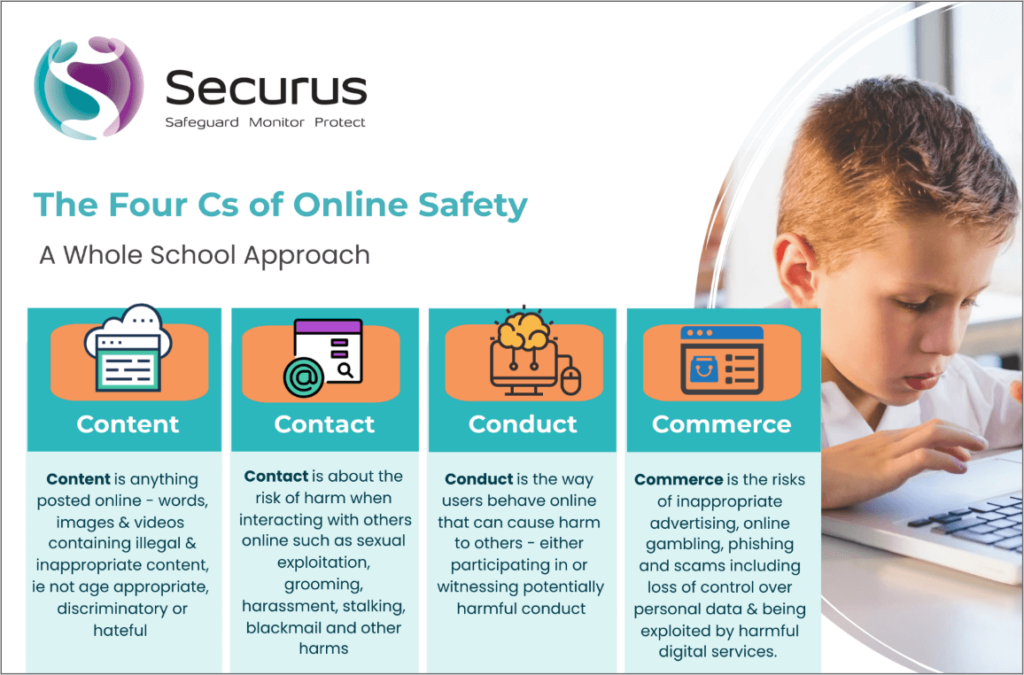Safeguarding in secondary schools is a crucial responsibility that ensures students are protected from harm, abuse, neglect, and exploitation.
Within a secondary school environment students may experience various forms of abuse – including physical, emotional, sexual, or neglect. They may also face risks such as bullying, peer pressure, and coercion, which can often be harder to identify.
Secondary school students are increasingly exposed to online risks that can also affect a student’s mental health, it is therefore essential for schools to regularly monitor the use of technology on school devices and provide support when issues arise. Our digital safeguarding solutions are therefore instrumental in monitoring the activity of students within this school age group.
Protecting the wellbeing of every secondary school student
School safeguarding leads play a crucial role to ensure that clear guidelines and safeguarding policy is in place and a detailed process is implemented to ensure students, staff and parents know how to report concerns when an incident occurs.
When using school devices and applications, this should include:
- Acceptable Use Policy (AUP) to outline what is and what is not acceptable behaviour online and across the school network
- Privacy Measures to show strict guidelines on what can be shared and what is stored by the school, including personal information
- Online Safety Education to teach students about digital harms – this includes fake news and content, sharing images and inappropriate material, grooming, hate speech, cyber bullying, radicalisation, exploitation and issues surrounding mental health and wellbeing
In Secondary Schools, children are taught:
- their rights, responsibilities & opportunities online.
- not to provide content to others that they would not want shared further and not to share personal material which is sent to them.
- what to do and where to get support to report material or manage issues online.
- the impact of viewing harmful content.
- that sexually explicit material like pornography presents a distorted picture of sexual behaviours.
- that sharing and viewing indecent images of children (including those created by children) is a criminal offence which carries severe penalties.
- how information and data is generated, collected, shared and used online.
This also includes being taught:
- what positive, healthy & respectful online relationships look like.
- the effects of their online actions on others.
- how to recognise and display respectful behaviour online.
- how to use technology safely, responsibly, respectfully & securely.
- where to go for help and support when they have concerns.
The 4 Cs of Online Safety for Seconary School Students – A Whole School Approach
The overall framework for online safety risks fall into four categories: Content, Contact, Conduct and Commerce. This allows safeguarding leads to understand and identify potential digital dangers and can be illustrated in the following graphic:
For more information on Securus monitoring solutions for your secondary school or multi-academy trust, please get in touch here or call us on 0330 124 1750
